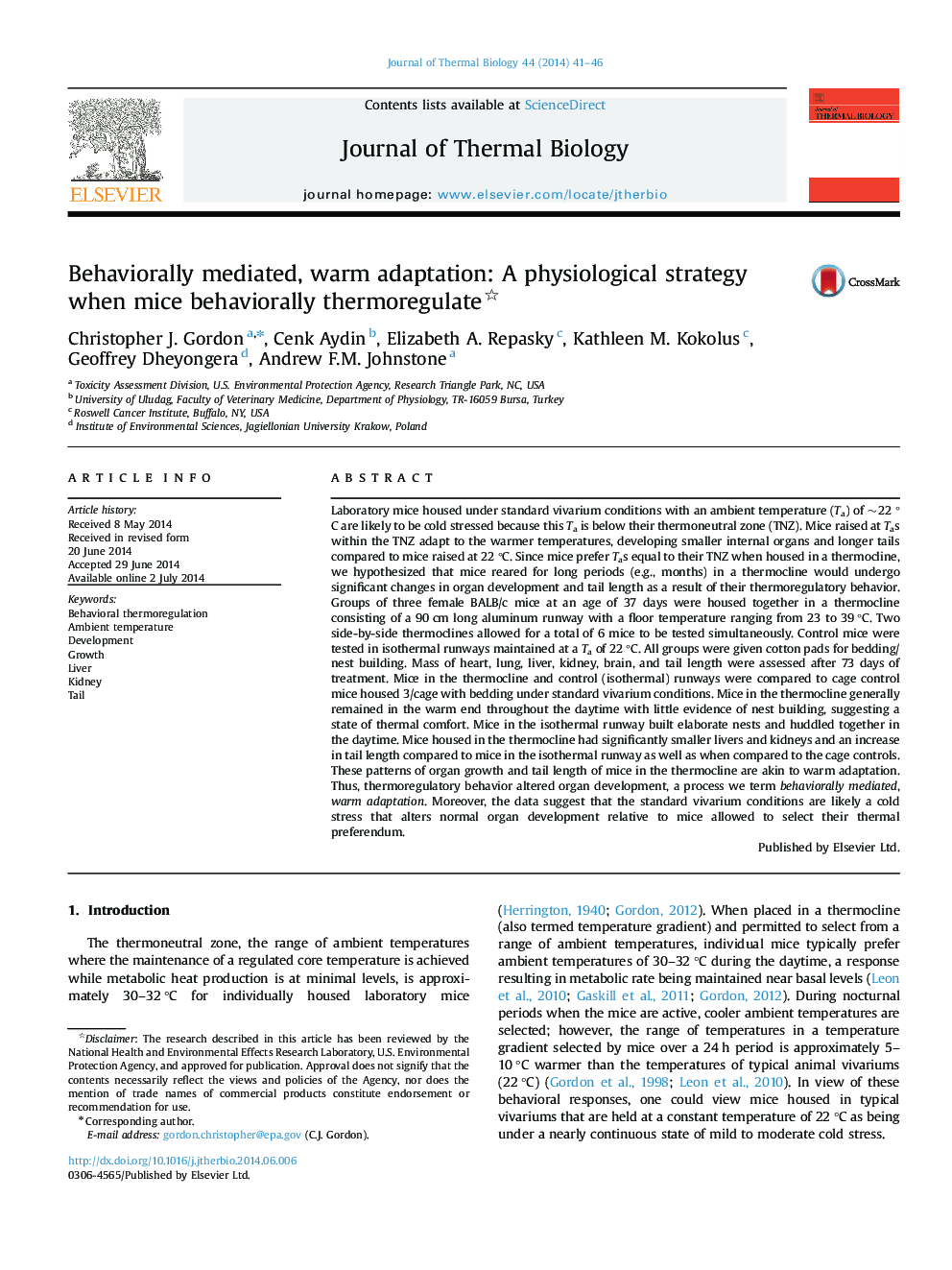| کد مقاله | کد نشریه | سال انتشار | مقاله انگلیسی | نسخه تمام متن |
|---|---|---|---|---|
| 2842906 | 1571101 | 2014 | 6 صفحه PDF | دانلود رایگان |
• Laboratory mice are typically housed at temperatures below thermoneutrality.
• When housed in thermocline, mice prefer much warmer temperatures, near thermoneutrality.
• Housing at cooler temperatures may alter growth and development.
• Mice housed in a thermocline selected warmer temperature that altered organ growth and tail length.
• Hence, mice warm adapt via behavior when given the option to behaviorally thermoregulate.
Laboratory mice housed under standard vivarium conditions with an ambient temperature (Ta) of ~22 °C are likely to be cold stressed because this Ta is below their thermoneutral zone (TNZ). Mice raised at Tas within the TNZ adapt to the warmer temperatures, developing smaller internal organs and longer tails compared to mice raised at 22 °C. Since mice prefer Tas equal to their TNZ when housed in a thermocline, we hypothesized that mice reared for long periods (e.g., months) in a thermocline would undergo significant changes in organ development and tail length as a result of their thermoregulatory behavior. Groups of three female BALB/c mice at an age of 37 days were housed together in a thermocline consisting of a 90 cm long aluminum runway with a floor temperature ranging from 23 to 39 °C. Two side-by-side thermoclines allowed for a total of 6 mice to be tested simultaneously. Control mice were tested in isothermal runways maintained at a Ta of 22 °C. All groups were given cotton pads for bedding/nest building. Mass of heart, lung, liver, kidney, brain, and tail length were assessed after 73 days of treatment. Mice in the thermocline and control (isothermal) runways were compared to cage control mice housed 3/cage with bedding under standard vivarium conditions. Mice in the thermocline generally remained in the warm end throughout the daytime with little evidence of nest building, suggesting a state of thermal comfort. Mice in the isothermal runway built elaborate nests and huddled together in the daytime. Mice housed in the thermocline had significantly smaller livers and kidneys and an increase in tail length compared to mice in the isothermal runway as well as when compared to the cage controls. These patterns of organ growth and tail length of mice in the thermocline are akin to warm adaptation. Thus, thermoregulatory behavior altered organ development, a process we term behaviorally mediated, warm adaptation. Moreover, the data suggest that the standard vivarium conditions are likely a cold stress that alters normal organ development relative to mice allowed to select their thermal preferendum.
Journal: Journal of Thermal Biology - Volume 44, August 2014, Pages 41–46
